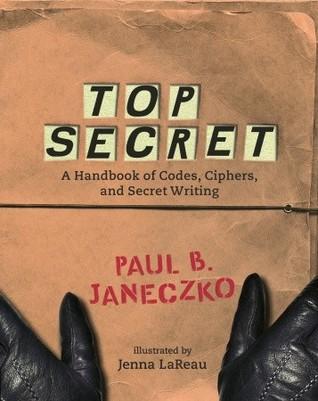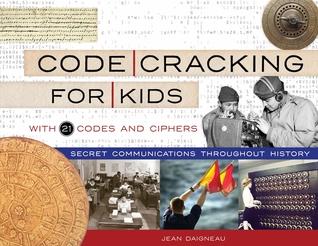 Happy National Novel Writing Month! NaNoWriMo happens every year in November when hundreds of thousands of people, around the world, take on the challenge to write a 50,000 word novel in 30 days.
Happy National Novel Writing Month! NaNoWriMo happens every year in November when hundreds of thousands of people, around the world, take on the challenge to write a 50,000 word novel in 30 days.
Last year, my NaNoWriMo project was a novel, inspired by the nonfiction book Code Girls by Liza Mundy, about women who worked as cryptologists for the Army in Washington DC during World War II. I had a great time, but didn't produce a viable manuscript. I needed to learn much more about the nitty-gritty of codebreaking if I were going to do any justice to this story.
I've spent the last several months working my way through various books to understand how this all works and I started with books for children. One of my secrets to success in life is to utilize children's books when I want to learn something new and complicated. This technique works well for all kinds of things - art appreciation to zoology and everything in between.
Two books for kids got me going on my project to understand codes and code-breaking.
Book: Top Secret: A Handbook of Codes, Ciphers, and Secret Writing by Paul B. Janeczko
Genre: nonfiction for children
Publisher: Candlewick Press
Publication date: 2006
Pages: 144
Source: print book from the library

Obviously, simple substitution ciphers are easy enough to break, if you have the time and inclination to solve the puzzle. But, they can be made much more complicated in various ways. Codes are very difficult to break, unless you get your hands on the nomenclator - the list of code words.
The book provides many examples and types of codes and ciphers, telling a fair amount of history along the way.
I loved learning that there are famous stories that feature ciphers. Edgar Allen Poe wrote one called "The Gold Bug." Two of the stories about Sherlock Holmes by Arthur Conan Doyle featured ciphers - "The Adventures of the Gloria Scott " and "The Adventure of the Dancing Men." "Dancing men" refer to a cipher that substitutes stick human figures in various positions for letters in a message.
Thoughts: I kept thinking how codes and ciphers might be a good entry to STEM for girls, who have needs to keep secrets in diary entries or messages between friends. Even simple substitution ciphers would keep most adults from reading messages, because teachers and parents don't have time to decipher notes. Pesky brothers might be more of a problem, but this book has many more difficult systems to use that would take real persistence and knowledge to decipher. Meanwhile, girls are learning about making and using the logical systems that underlie any effective secret communication. This is the same kind of logical thinking that helps with math and with computer science.
Appeal: Top Secret: A Handbook of Codes, Ciphers, and Secret Writing is the book you want if your goal is to learn many ways to cipher or code messages in order to keep secrets.
Book: Code Cracking for Kids: Secret Communications Throughout History, with 21 Codes and Ciphers by Jean Daigneau
Genre: nonfiction for children
Publisher: Chicago Review Press
Publication date: 2019
Pages: 144
Source: print book from the library

This book continues the story of cryptography to the present-day, which offers another STEM career option for our young friends obsessed with secrecy. That trait may some day make them excellent professionals in the arena of cyber security.
This book still contains lots of examples of ciphers and codes, including some that weren't covered in Top Secret.
Thoughts: One of my favorite stories was about how the Allies hid POW escape kits in Monopoly games during WWII. Families were allowed to send care packages. Nazi prison guards considered games a good way to keep prisoners occupied. They never noticed that a map was slipped into a crevice in the board or that real paper currency replaced some of the game money.
Appeal: Code Cracking for Kids: Secret Communications Throughout History, with 21 Codes and Ciphers is the book you want if you're fascinated by the stories of people who used and cracked codes and ciphers. Of course, a kid who is really fascinated by the topic will want both books.
Do you know any young people who might like to be introduced to the world of codes and ciphers or spies and codebreakers? Both of these books are still in print.

About Joy Weese Moll
a librarian writing about books
